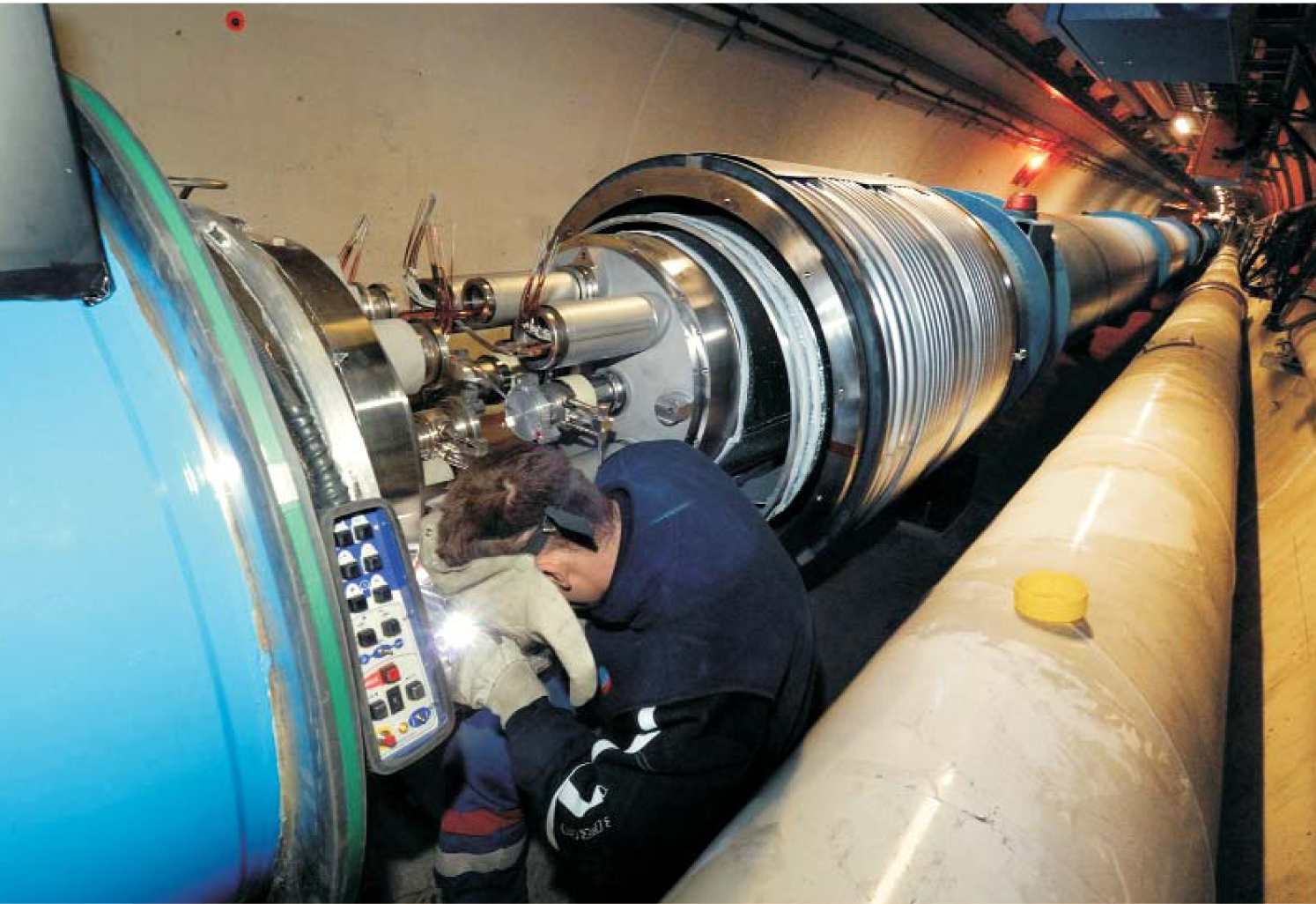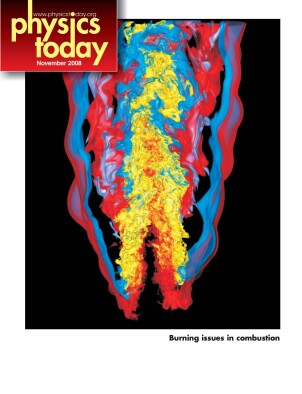Mishap shuts down LHC until April
DOI: 10.1063/1.3027981
On 10 September there was much celebrating at CERN and throughout the worldwide particle-physics community when a beam of protons successfully made its way around the full 27-km circumference of the laboratory’s new Large Hadron Collider on the first try. The hope was that by the end of September the LHC would be bringing countercirculating beams of 0.5-TeV protons into collision and that a month later experimenters could start doing physics with colliding beams of 5-TeV protons. Then next April, after the obligatory winter shutdown during the months of highest energy cost, the collider would finally be operating at its design beam energy of 7 TeV (see Physics Today, September 2007, page 90
Just a week later all that optimism got what LHC project leader Lyn Evans described as “a kick in the teeth.” On 19 September a breach in the cryogenic piping between superconducting magnets in the collider ring caused the evaporation and high-pressure discharge of a ton or two of liquid helium into one 3.4-km octant sector of the LHC tunnel. The rupture is tentatively attributed to an electrical fault in a high-current connection between one of the ring’s 15-meter-long dipole bending magnets and a quadrupole focusing magnet. The He, cooled to superfluidity at 1.9 K, is meant to keep the niobium–titanium bending-magnet coils cold enough to achieve the unprecedented 8.3-tesla field needed to confine 7-TeV protons in the LHC ring.
Precisely what caused the mishap and how much damage it did could not be known before looking inside the magnets involved. Because that requires warming the sector’s entire string of 154 bending magnets to ambient temperature, the inspection could not be completed before mid-October. But already on 23 September, the CERN directorate announced that there will be no more beams in the LHC before next April.
Although that unbidden hiatus can be used to work on magnets and injector maintenance, it does mean a delay of at least two months in the push for the first physics run at the collider’s design energy. “That’s not very much on a project that has been over two decades in the making,” says CERN Director General Robert Aymar. “It’s simply a fact of life in experimental physics at the frontiers of knowledge and technology.”
A pioneering accelerator
The LHC is indeed a frontier undertaking. Its design energy represents a bold sevenfold leap beyond the 1-TeV beams of its immediate predecessor, Fermilab’s Tevatron proton–antiproton collider. The LHC bending magnets, with twice the field strength of the Tevatron magnets, are the first accelerator dipoles ever to be cooled with superfluid He. And the LHC’s design luminosity—its collision rate per unit scattering cross section—is 1034 events/(s cm2), thirty times that of the Tevatron collider. That very high luminosity is necessary because the LHC will be searching for processes, such as the creation of Higgs bosons and supersymmetric particles, whose production cross sections are expected to be extremely small at a proton–proton collision energy of “only” 14 TeV.
After the October warmup and inspection, a few magnets will probably have to be brought up from the underground LHC tunnel for repair. Each of the LHC ring’s 1232 bending magnets costs almost $1 million. In any case, the entire octant string of 154 magnets that have been warmed up will have to undergo some “retraining.” In the 8.3-T field, or even in the 6-T field required for 5-TeV beams, the magnet coils are subjected to enormous Lorentz forces that inevitably cause slight coil movements when the magnet current is ramped up for the first time. Such movement can create enough frictional heating to cause first a local and then a general loss of superconductivity in a magnet—a so-called quench. Training a new or newly recooled magnet involves slowly ramping up the current and allowing carefully controlled quenches until all the coils have settled in securely.
Before it’s ever sent underground, every LHC bending magnet is cooled and trained up to the field required for 7-TeV beams at a test facility. But after a string of 154 magnets has been assembled in the ring and recooled, the entire string has to be retrained in situ. The 19 September accident occurred in the last octant sector to be trained for 5-TeV operation—indeed while that training was in progress.
“The [accident’s] first manifestation was a massive quench,” recounted Evans at a CERN meeting on 24 September. “But the quench-protection system worked perfectly.” The problem, he explained, was not the quench itself but the major electrical fault that instigated it and caused the liquid-He rupture. And that fault had to be investigated to make sure it would not recur.

In the tunnel of the Large Hadron Collider as it neared completion at CERN last year, a technician welds connections between two of the 15-meter-long superconducting bending magnets arrayed along the LHC’s 27-km circumference. The recent accident that has shut the LHC down until next April is tentatively attributed to an electrical fault that ruptured the cryogenic liquid-helium piping in a similar interconnection complex between one of the bending magnets and a focusing magnet.
CERN





